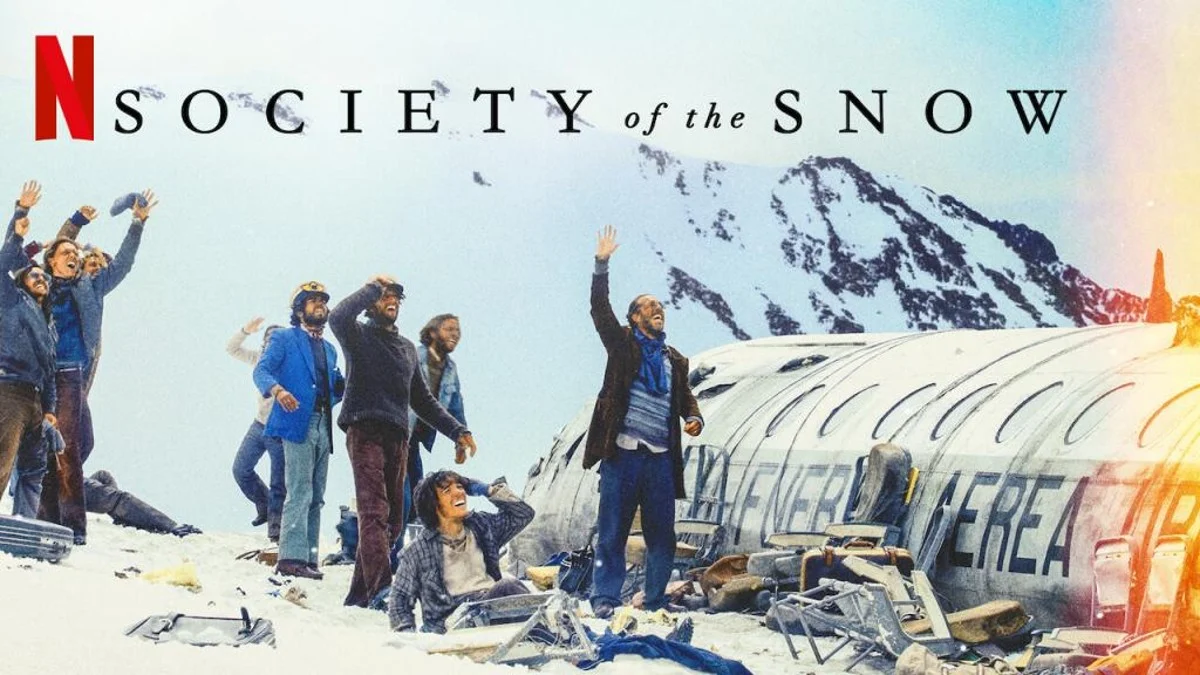Some say it was a tragedy. Others call it a miracle. What really happened? What happens when the world abandons you?
In Oct. 1972, a flight of Uruguayan rugby players headed to Chile for a match. What they would soon learn, however, was that their route guided them directly into the heart of the Andes mountains. Out of the forty passengers and five crew members, less than half would live to tell the story.
Society of the Snow, the new, Oscar-nominated film presents an outstanding narrated account of both the heartbreaking ending and extraordinary true survival tale of each victim in the disaster.
Completing a two-and-a-half-hour movie in one sitting usually isn’t something I would push myself to achieve; however, given that the passengers on board the plane endured seventy-one days in the impossible Andean environment, two hours is an extremely small task.
The pacing of the film—the way it held me in a trance-like state until the credits filled the screen, completely captivated—undoubtedly enhanced the experience. Two hours felt like minutes. It was clear that director J.A. Bayona made sure every second of dialogue and scenery was significant in one way or another. When the movie finished, I truly felt I had gained something from my viewing.
There was only one thing that took some time for me to adapt to. Embarrassingly, a whole five minutes went by before I realized that the whole movie was originally in Spanish. Like an old Clint Eastwood film, the English dubbing was slow and a couple of seconds off. But once I got used to the unusual audio-visual connection, everything went by smoothly.
The only break I had to take was when I got into the meat of the movie—no pun intended. Soon after the plane crashed and the survivors began to tend to the injured, their supply of food from the luggage they could find had diminished. Hydration was never an issue considering the endless blanket of snow surrounding them, but food quickly became a concern and source of discord.
Their only chance of beating starvation was buried under the snow outside: the decision to resort to cannibalism was obvious to those who were desperate for survival but infringed on the moral standards of others.
This pivotal scene just so happened to begin as I was eating dinner. With the gory and nauseating scenes that came before, I had to take thirty minutes to force my food down before I could watch the disassembly and consumption of the deceased passengers.
From that point forward, it was no longer a film about a disaster. It was a test to discover what someone would do to see their family one more time. The adversities and suffering were relentless; the Andes had no sympathy for spared lives. I was kept on my toes for the entire two hours because it was seemingly one thing after another: just as the survivors made progress towards their escape, something else would block their path.
I will continue to recommend this movie to everyone I know. Not only does it make you appreciate your lifestyle, but every so often, I’m reminded that this is a gut-wrenching true story.
Of course, aircraft safety has only been improved since the early 70s, but Society of the Snow left me with no desire to board a plane any time soon.




























































































